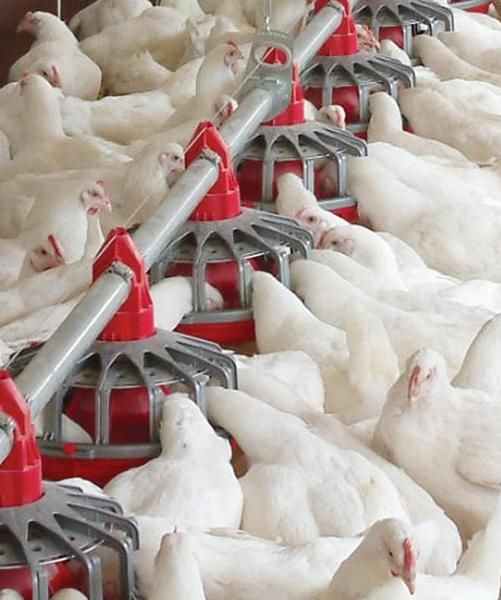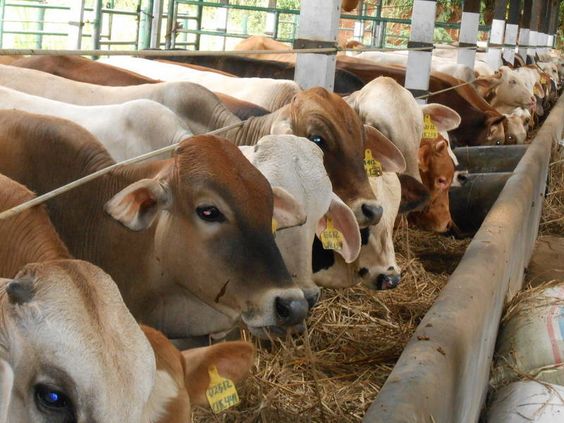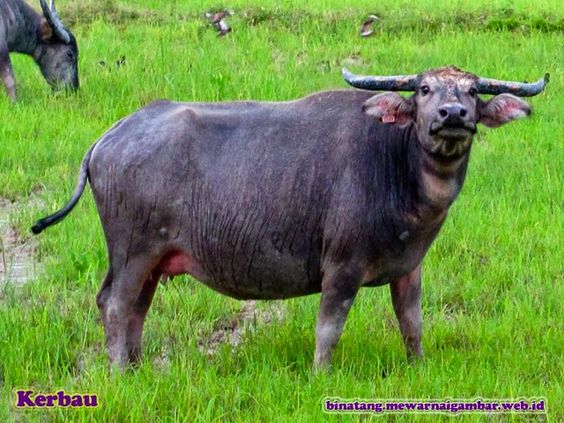Cow Cultivation Methods: A Comprehensive Guide
Cow Cultivation Methods, The term cultivation typically refers to the growth and care of plants. However, “cow cultivation methods” can be understood as the practices involved in raising and managing cattle for various purposes. This comprehensive guide delves into the world of cow cultivation, exploring its benefits, objectives, different methods, and best practices.
Cattle, also known as cows and bulls, are domesticated ungulates belonging to the Bovidae family. They have been a vital part of human civilization for millennia, providing us with milk, meat, leather, and even draft power. Cow cultivation methods encompass the entire process of raising healthy and productive cows, from selecting breeds to ensuring their well-being throughout their lifespan.
Benefits of Cow Cultivation
- Food Security: Cows are a primary source of protein through milk and meat. They efficiently convert plant material into consumable products, contributing significantly to global food security.
- Economic Benefits: Cow cultivation generates income for farmers through the sale of milk, meat, and breeding stock. It also creates jobs in related industries like transportation, processing, and retail.
- Manure: Cow manure is a valuable organic fertilizer that improves soil fertility and crop yields.
- Draft Power: In some regions, cows are used for plowing fields and transporting goods, especially in areas with limited access to machinery.
- Leather and Byproducts: Cow hide is used to produce leather for various products like shoes, bags, and belts. Other byproducts like horns and bones can be used for crafting and industrial applications.
Objectives of Cow Cultivation
The primary objectives of cow cultivation methods can be categorized based on the desired outcome:
- Milk Production: Dairy farming focuses on raising cows for milk production. Specific breeds are chosen for their high milk yield and lactation periods.
- Meat Production: Beef cattle are raised for meat consumption. Techniques are employed to maximize their growth rate and muscle mass.
- Dual-Purpose: Some breeds are suitable for both milk and meat production, offering versatility to farmers.
- Draft Power: In specific regions, cows are raised primarily for their strength and endurance to perform draft work.
Different Methods of Cow Cultivation Methods
The chosen cow cultivation method depends on factors like the desired product (milk, meat, draft power), available resources (land, labor), and economic considerations. Here’s a breakdown of some common methods:
- Pasture-Based Systems: Cows graze freely on pastures, consuming natural forage like grasses, legumes, and herbs. This method is considered humane and produces high-quality meat and milk with a distinct flavor profile. However, it requires extensive land and may not be suitable for large-scale production.
- Feedlot Systems: Cattle are confined in feedlots and fed a controlled diet of grains, supplements, and hay. This method promotes rapid growth and higher meat yields, but it raises concerns about animal welfare and environmental impact.
- Silvopastoral Systems: This approach integrates trees, shrubs, and forage plants within pastures. It provides shade and additional feed sources for cows while promoting biodiversity and soil health.
- Organic Farming: Organic cow cultivation emphasizes natural methods and avoids synthetic fertilizers, pesticides, and antibiotics. Organic cows are typically pasture-raised and receive organic feed.
Best Practices for Cow Cultivation Methods
Regardless of the chosen method, several best practices contribute to successful cow cultivation:
- Breed Selection: Selecting breeds suited to the specific climate, purpose (milk, meat, draft), and management system is crucial.
- Proper Nutrition: Providing cows with a balanced diet that meets their nutritional needs for growth, reproduction, and milk production is essential.
- Health Care: Regular veterinary checkups, vaccinations, and parasite control programs ensure the health and well-being of the herd.
- Housing and Management: Providing cows with comfortable housing that protects them from extreme weather conditions is important. Proper waste management and regular cleaning are crucial for hygiene and disease prevention.
- Breeding Management: Implementing a well-defined breeding program ensures genetic improvement of the herd and desired offspring characteristics.
- Record Keeping: Maintaining accurate records of individual cow performance, health history, and breeding information helps in making informed management decisions.
Emerging Trends in Cow Cultivation Methods
The field of Cow Cultivation Methods is constantly evolving, with new technologies and approaches emerging to address challenges and improve efficiency. Here are some noteworthy trends:
- Precision Livestock Farming: This approach utilizes sensors, data analysis, and automation to monitor individual cow health, feed intake, and behavior. It allows for targeted interventions and improved management decisions.
- Genetic Selection Techniques: Advancements in genetics are leading to the development of breeds with improved disease resistance, higher yield, and better feed conversion efficiency.
- Sustainable Practices: Growing awareness of environmental impact has led to a focus on sustainable cow cultivation practices.This includes reducing reliance on antibiotics and growth hormones, minimizing methane emissions, and utilizing manure as a renewable energy source through biogas production.
Challenges in Cow Cultivation Methods
Despite its longstanding importance, cow cultivation faces several challenges:
- Climate Change: Rising temperatures, extreme weather events, and water scarcity can disrupt feed production and impact cow health.
- Disease Threats: Emerging infectious diseases and antibiotic resistance pose a threat to herd health and production.
- Economic Fluctuations: Fluctuations in market prices for milk, meat, and feed can impact farmer profitability.
- Consumer Preferences: Changing consumer preferences toward organic and ethically sourced products require adaptations in cow cultivation practices.
The Future of Cow Cultivation Methods: A Balancing Act
The future of Cow Cultivation Methods necessitates a delicate balancing act between economic viability, environmental sustainability, and ethical animal treatment. Here are some key considerations:
- Balancing Production and Sustainability: Developing and adopting practices that optimize production efficiency while minimizing environmental impact. This could involve using renewable energy sources, reducing water consumption, and implementing manure management strategies.
- Transparency and Traceability: Implementing robust systems to track the origin of meat and milk products, allowing consumers to make informed choices based on their values.
- Consumer Education: Educating consumers about the complexities of cow cultivation and the factors influencing food production choices. This empowers them to support sustainable and ethical practices.
Cow Cultivation Methods encompass a diverse range of practices, from traditional pasture-based systems to cutting-edge technologies like PLF. Understanding these methods and exploring specialized techniques allows farmers to make informed decisions that align with their goals, resources, and market demands. As the field continues to evolve, embracing sustainable practices, ethical considerations, and technological advancements will pave the way for a future of cow cultivation that is efficient, responsible, and meets the growing demands of a global population.






